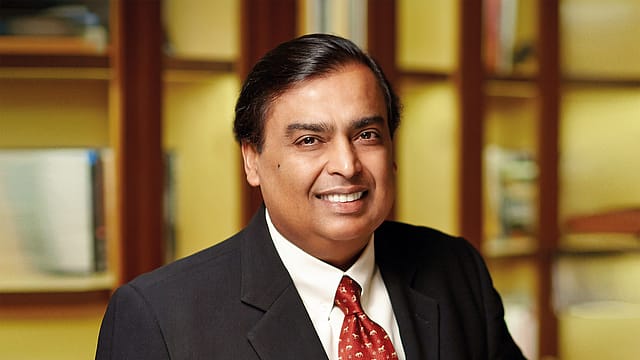RIL green energy biz to outshine all growth engines in 5-7 yrs: Ambani
ADVERTISEMENT

Mukesh Ambani, the chairman of India’s largest company Reliance Industries Ltd., says the company’s green energy business will start going live in the next 12 months, and holds a great promise to outshine all its existing growth engines in just 5-7 years.
"FY 2021-22 marked the beginning of Reliance’s Green Transformation, at a scale which will make India the world’s leading green energy producer," Ambani says in his message to shareholders in the company’s annual report for 2021-22.
In green energy, Reliance will develop end-to-end green energy solutions to make them available for everyone at the most affordable price, says Ambani.
In FY22, RIL set up the Reliance New Energy Council ('NEC') to identify opportunities and engage in partnerships worldwide. It is eying to reinvent itself to become a new energy major, with a focused tech roadmap of 5 to 15 years. RIL has also committed to a net carbon zero emission goal by 2035.
"Just as India has the world’s most affordable wireless broadband today, we will have the world’s most affordable green energy within this decade. And these solutions will then be exported to other countries, helping them contain carbon emissions," says the RIL chairman.
Ambani wants Reliance's green ecosystem to compete with fossil fuels directly. Reliance says it'll enable the entire green energy ecosystem throughout India, starting with solar power generation to the production of green hydrogen to its distribution and consumption.
January 2026
Netflix, which has been in India for a decade, has successfully struck a balance between high-class premium content and pricing that attracts a range of customers. Find out how the U.S. streaming giant evolved in India, plus an exclusive interview with CEO Ted Sarandos. Also read about the Best Investments for 2026, and how rising growth and easing inflation will come in handy for finance minister Nirmala Sitharaman as she prepares Budget 2026.
For this, RIL partnered with local and international corporates in FY22, including companies like Ambri in the U.S., Faradion in the U.K. and The Netherlands-based Lithium Werks in the energy storage space.
Similarly, Reliance invested in Germany’s NexWafe, a pioneer in next-gen technology to produce monocrystalline silicon wafers needed in making solar panels. RIL has also acquired promoters’ stake in REC Solar – a global technology leader in solar panel manufacturing.
Besides, Reliance picked up a 40% stake in Sterling & Wilson Renewable Energy – one of the world’s leading EPC turnkey contractors in large-scale solar projects.
In the hydrogen ecosystem, Reliance tied up with the U.S.-based Chart Industries to set up India H2 Alliance to commercialise hydrogen technology and develop a supply chain with other Indian stakeholders.
It signed a pact with Denmark’s Stiesdal A/S to develop next-gen electrolyser technology, which can dramatically reduce the cost of producing hydrogen from pure water.
At home, RIL is working on the four Giga factories at Dhirubhai Ambani Green Energy Giga Complex and is setting up world-scale production capacity for solar panels, energy storage systems, electrolysers and fuel cells spread over 5,000 acres in Jamnagar.
"Reliance will also invest in creating an ecosystem of thousands of small and medium-scale project consultants and installers pan-India to set up Green Energy generation projects in every nook and corner of the country," says Ambani.
Reliance will also undertake large Giga Watt scale turnkey green energy projects for Power GenCos or large investors on its own.
Notably, the Indian renewable energy sector is the world's fourth most attractive renewable energy market. The country was ranked fourth in wind power, fifth in solar power and fourth in renewable power installed capacity, as of 2020, according to the renewable energy country attractiveness index by EY.
On the global level, demand for green energy is likely to increase from 1,71,000 TWh to 1,74,000 TWh in 2040. At the same time, crude oil demand will likely decrease by 37% from 95 mmbpd (56,700TWh) to 60 mmbpd (36,000 TWh). This is likely to increase the total electricity from renewable sources.
As the quality of life improves, India’s energy demand is likely to increase from 12,400 TWh to 18,000 TWh by 2040, shows the IBEF.org data.
RIL's net revenue for the FY22 had risen 47% year-on-year to ₹7,92,756 crore, while its profit after tax had grown 26.2% to ₹67,845 crore. The earnings per share also grew 20.5% to ₹92, while the dividend per share for the fiscal year was ₹8 apiece. RIL's market capitalisation as of March 31, 2022, stood at ₹17,81,841 crore, up from ₹13,15,998 crore in FY21.
